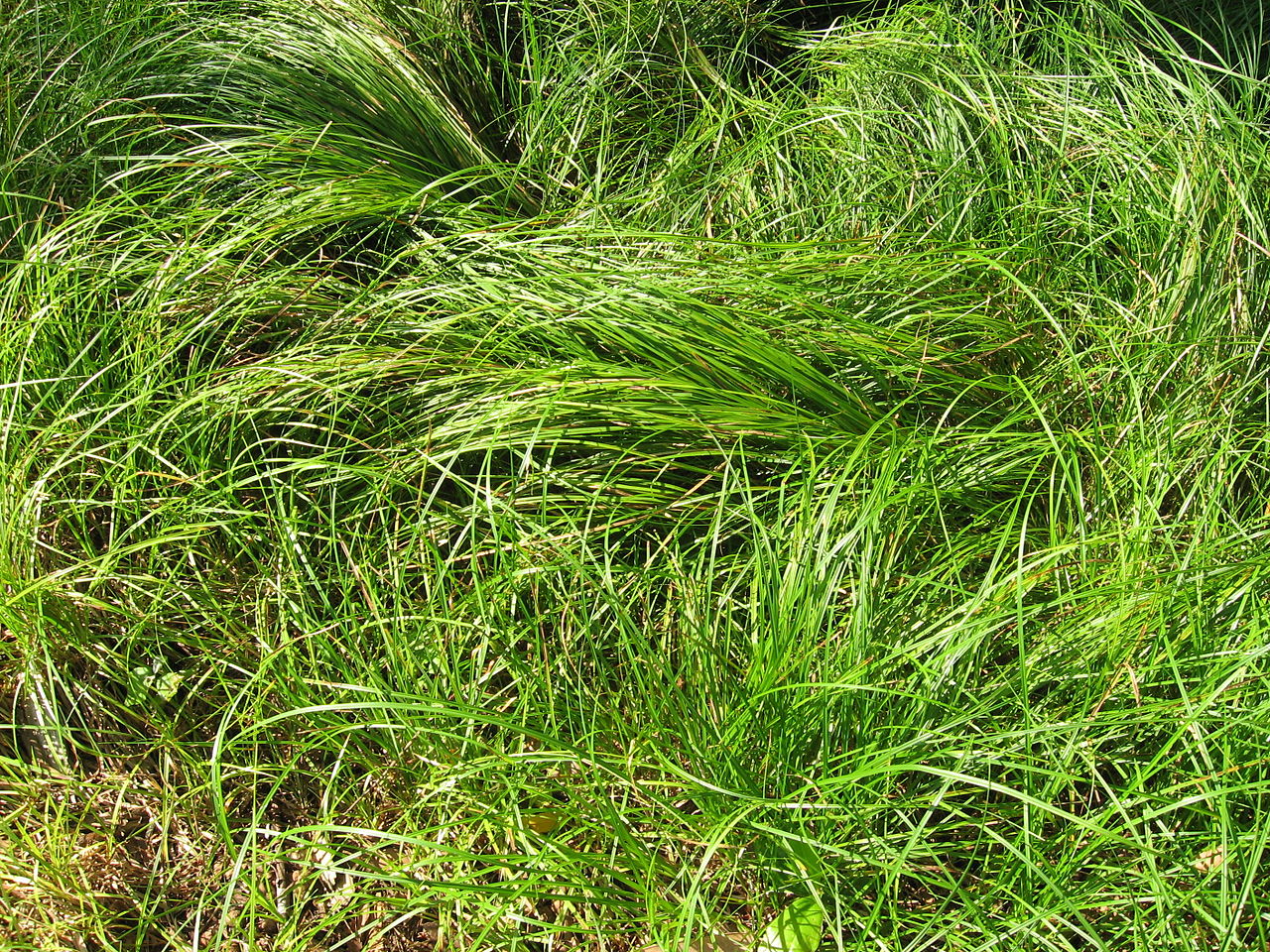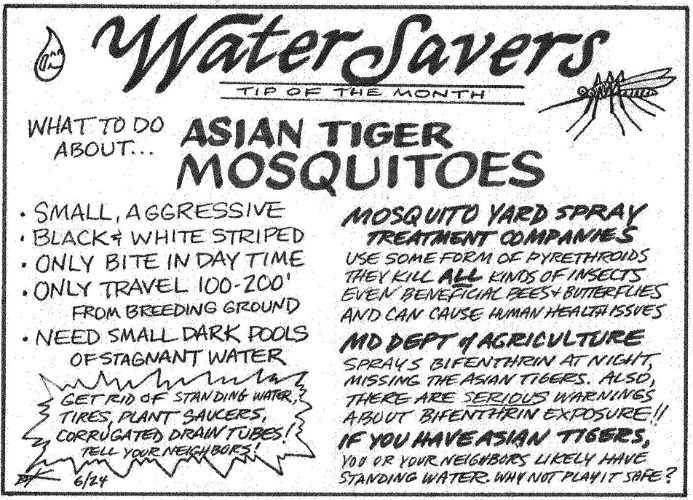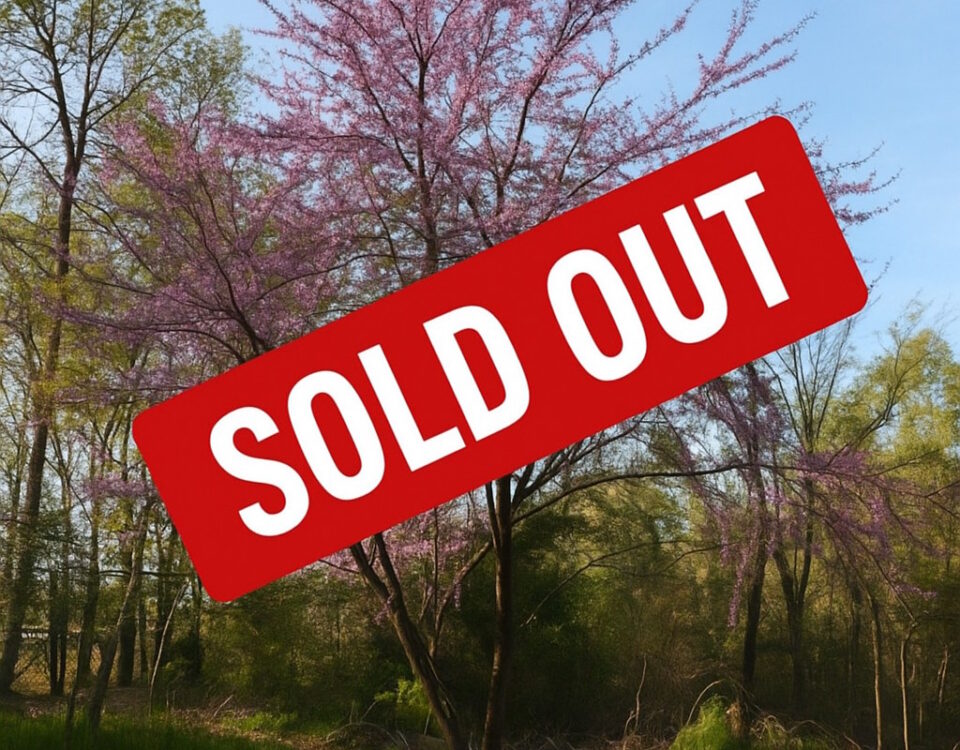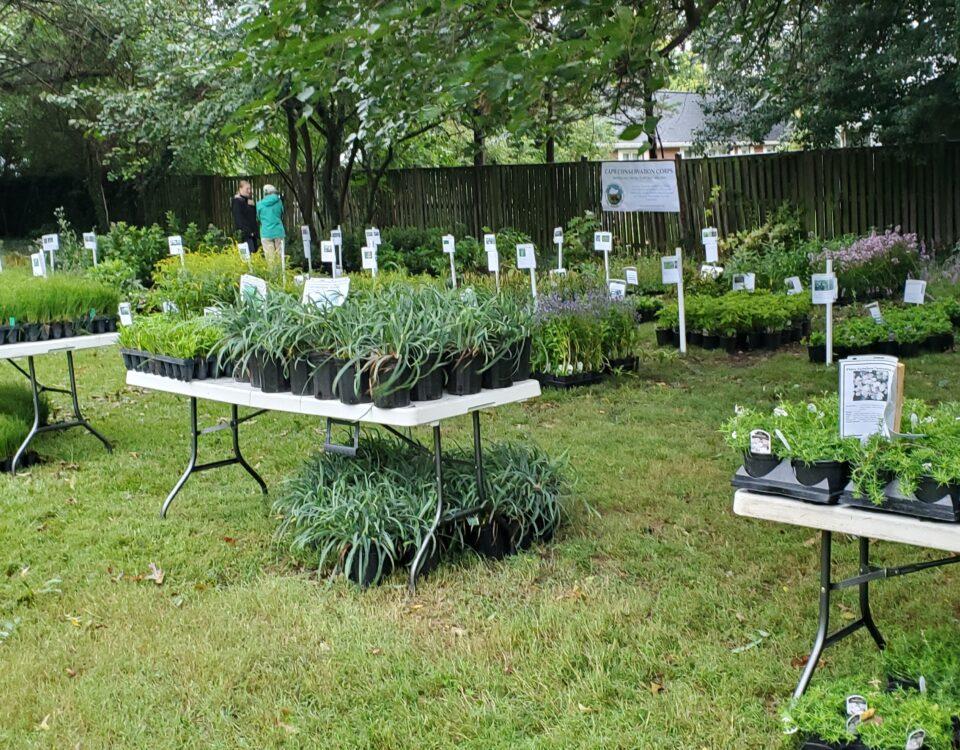
Native Grasses: Overlooked and Underused
October 16, 2018
Habitat Hero – December 2018
December 20, 2018By: Stacey Wildberger
Let’s keep talking about grasses. In the last blog I discussed how grasses are often overlooked and underused in our landscapes and some of the benefits of using native grasses. I would like to talk about a group of native grasses that has a species for just about every growing condition—Carex. I touched on them briefly last month but let’s take a look at some Maryland Native Carex that will add texture and beauty to your gardens!
DRY SHADE
 Carex pensylvanica Pennsylvania sedge is a low growing grass with a tough disposition and spreading habit that makes an excellent shade groundcover. This ½-1’ sedge prefers part- to full-shade with dry to medium moisture. It can tolerate moisture so it could even be used in a rain garden in dappled sun. The soft, delicate arching leaves provide wispy clumps that spread and naturalize your space. If you are looking for a lawn alternative, something to work in those dry, shady spots of Cape St Claire, this is the sedge for you!
Carex pensylvanica Pennsylvania sedge is a low growing grass with a tough disposition and spreading habit that makes an excellent shade groundcover. This ½-1’ sedge prefers part- to full-shade with dry to medium moisture. It can tolerate moisture so it could even be used in a rain garden in dappled sun. The soft, delicate arching leaves provide wispy clumps that spread and naturalize your space. If you are looking for a lawn alternative, something to work in those dry, shady spots of Cape St Claire, this is the sedge for you!
 Carex albicans White-tinged sedge is another native grass that would work well in the Cape with its part shade to full shade, and low moisture requirements. It will tolerate dry and even drought conditions. Albicans will spread through rhizomes and self-seeding. The 5-20’’ tall clumps have narrow, upright-arching bright green blades and are typically up to 16” wide. They work best when planted in mass for a full foliage effect and offer year round interest. I have planted this around the base of some shrubs to fill in a as groundcover and control weeds.
Carex albicans White-tinged sedge is another native grass that would work well in the Cape with its part shade to full shade, and low moisture requirements. It will tolerate dry and even drought conditions. Albicans will spread through rhizomes and self-seeding. The 5-20’’ tall clumps have narrow, upright-arching bright green blades and are typically up to 16” wide. They work best when planted in mass for a full foliage effect and offer year round interest. I have planted this around the base of some shrubs to fill in a as groundcover and control weeds.
 Carex appalachia Appalachian sedge is one I have used to stabilize a slight slope in the back part of my yard that has shady and dry conditions. This sedge grows in dense mounded tufts that sweep along the slope with its willowy foliage. This ‘moisture challenged’ sedge is another one that can be used to replace lawn in your hard to grow areas. Used as erosion control, as a ground cover, in a rock garden or low maintenance beds this sedge will also provide a nectar to native insects, seeds for birds, and as a host plant for several butterflies.
Carex appalachia Appalachian sedge is one I have used to stabilize a slight slope in the back part of my yard that has shady and dry conditions. This sedge grows in dense mounded tufts that sweep along the slope with its willowy foliage. This ‘moisture challenged’ sedge is another one that can be used to replace lawn in your hard to grow areas. Used as erosion control, as a ground cover, in a rock garden or low maintenance beds this sedge will also provide a nectar to native insects, seeds for birds, and as a host plant for several butterflies.
MOIST SHADE
 Another great choice for your landscapes is Carex amphibola Creek Sedge, this highly adaptable, shade tolerant grass prefers medium to moist, even wet soil. Bright green mounds form attractive fountain-shaped clumps that can be very ornamental. Use this sedge in shade gardens, rain gardens (can tolerate some sun if it stays moist), meadows and along streambanks. It is deer resistant and a host plant for many skipper butterflies as well as food source for turtles (seed heads).
Another great choice for your landscapes is Carex amphibola Creek Sedge, this highly adaptable, shade tolerant grass prefers medium to moist, even wet soil. Bright green mounds form attractive fountain-shaped clumps that can be very ornamental. Use this sedge in shade gardens, rain gardens (can tolerate some sun if it stays moist), meadows and along streambanks. It is deer resistant and a host plant for many skipper butterflies as well as food source for turtles (seed heads).
 While we are still in the shady moist areas of the yard, let’s talk about Carex plantaginea Plantainleaf sedge. A 1-2’ tall sedge with red-purple at the base and bright green, broad evergreen leaves up to 1” across. This stunning sedge prefers the shady, moist, rich woods areas. I planted it in a wet spot of the yard this fall and cannot wait to see how it performs this coming year. With its bright foliage this would make an attractive ornamental plant but it offers wildlife benefits as well, it is a host plant to several woodland butterflies and the seeds are food source for woodland birds. This low maintenance plant will also add texture to shade gardens, act as a groundcover or a woodland trail border.
While we are still in the shady moist areas of the yard, let’s talk about Carex plantaginea Plantainleaf sedge. A 1-2’ tall sedge with red-purple at the base and bright green, broad evergreen leaves up to 1” across. This stunning sedge prefers the shady, moist, rich woods areas. I planted it in a wet spot of the yard this fall and cannot wait to see how it performs this coming year. With its bright foliage this would make an attractive ornamental plant but it offers wildlife benefits as well, it is a host plant to several woodland butterflies and the seeds are food source for woodland birds. This low maintenance plant will also add texture to shade gardens, act as a groundcover or a woodland trail border.
 Carex grayi Grays sedge was one I found recently that work well in moist to wet shady conditions. It forms slow spreading clumps with narrow shiny, upright semi-evergreen foliage. The seed head forms a spiked club that turns green to a golden brown which makes for an interesting addition to the winter garden for year round enjoyment.
Carex grayi Grays sedge was one I found recently that work well in moist to wet shady conditions. It forms slow spreading clumps with narrow shiny, upright semi-evergreen foliage. The seed head forms a spiked club that turns green to a golden brown which makes for an interesting addition to the winter garden for year round enjoyment.
 Carex glaucodea Blue wood sedge is another interesting clump forming ground cover that works in average to moist conditions in shade to part shade areas. It can also tolerate some drought conditions. Blue wood sedge is typically found in wet woodlands or swampy grounds. The evergreen foliage is a fine-textured, narrow grass-like blue-green leaf. This sedge would well in small group in a woodland garden, shade garden or rock garden and makes a lovely edging along a pathway or around a pond.
Carex glaucodea Blue wood sedge is another interesting clump forming ground cover that works in average to moist conditions in shade to part shade areas. It can also tolerate some drought conditions. Blue wood sedge is typically found in wet woodlands or swampy grounds. The evergreen foliage is a fine-textured, narrow grass-like blue-green leaf. This sedge would well in small group in a woodland garden, shade garden or rock garden and makes a lovely edging along a pathway or around a pond.
MOIST SUN
 Carex lurida Lurid sedge has narrow bright yellow-green 1” leaves and grows up to 3’ tall when its “flower” stalk shoots up in the spring. It thrives in sun to part sun in damp or wet areas making it a great addition to rain gardens and wet meadows. This sedge works well planted in mass for erosion control, low maintenance gardens and wetland restoration areas. This is another one with many wildlife benefits. The Sedge Wren feeds and nests in large areas of wetland sedges, and it is the host plant for the Eyed Brown butterfly and several Skipper species and moths
Carex lurida Lurid sedge has narrow bright yellow-green 1” leaves and grows up to 3’ tall when its “flower” stalk shoots up in the spring. It thrives in sun to part sun in damp or wet areas making it a great addition to rain gardens and wet meadows. This sedge works well planted in mass for erosion control, low maintenance gardens and wetland restoration areas. This is another one with many wildlife benefits. The Sedge Wren feeds and nests in large areas of wetland sedges, and it is the host plant for the Eyed Brown butterfly and several Skipper species and moths
Carex crinita fringed sedge works well in moist to wet up to standing water full sun so another great rain garden or pond addition or low lying areas of the yard. It can even tolerate drier shady spots. This short creeping evergreen sedge grows in dense clumps 2-3’ tall which sends up an arching flower in late spring. Fringed sedge has similar wildlife benefits as the lurid sedge—another favorite nesting spot of the Sedge wren as well as a host for Eyed Brown butterfly, skippers and moths.
 The emergent Carex stricta Tussock sedge is a favorite of mine around my pond. This moisture, sun loving sedge forms colonies with underground rhizomes. Its fountain like bright green foliage makes a beautiful addition to wetlands, bio-swales, and storm water projects.
The emergent Carex stricta Tussock sedge is a favorite of mine around my pond. This moisture, sun loving sedge forms colonies with underground rhizomes. Its fountain like bright green foliage makes a beautiful addition to wetlands, bio-swales, and storm water projects.
 And finally, Carex vulpinoidea fox sedge thrives in part to full sun wet areas. This sedge is useful for wetland restoration, erosion control, storm water management and wildlife gardens. The delicate arching foliage is mostly evergreen creating year round beauty in the landscape. The seed and rising spike turn a deep brown color in autumn.
And finally, Carex vulpinoidea fox sedge thrives in part to full sun wet areas. This sedge is useful for wetland restoration, erosion control, storm water management and wildlife gardens. The delicate arching foliage is mostly evergreen creating year round beauty in the landscape. The seed and rising spike turn a deep brown color in autumn.
I hope you will consider using a Carex or two in your landscapes to add texture, color and movement to the garden. Many of these sedges are beneficial to wildlife by providing both coverage, and food for birds or caterpillars. The benefits to storm water management, erosion control and wetland restoration are also an important reason to use these beauties.






